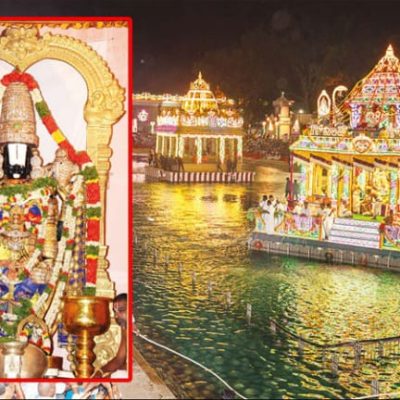Tripunithura Sri Poornathrayeesa Temple – Kerala

Address
Tripunithura Sri Poornathrayeesa Temple – Kerala
Tripunithura, Cochin district,
Tamil Nadu -682301
Phone: +91- 484 – 277 4007.
Moolavar
Sri Poornathrayeesa
Introduction
Location and Overview:
- The Sree Poornathrayesa Temple is located in Tripunithura, a suburb of Kochi, in the Kerala state of India.
- Tripunithura was the capital of the erstwhile Kingdom of Cochin.
- The temple is believed to be over 2000 years old and is considered one of the greatest temples in Kerala. It was the first among the eight royal temples of the Kochi Kingdom and was revered as the national deity of Cochin.
- The main deity, Lord Vishnu, is worshipped in the form of Santhanagopala Murthy, a manifestation of the Lord known for his affection towards elephants.
Puranic Significance:
- Sree Poornathrayesa’s idol is believed to have been given by Lord Vishnu to Arjuna (the third Pandava) to help bring the children of a Brahmin back to life. This incident is central to the temple’s origin.
- The idol, which was initially kept in a palace west of the main temple, was later relocated to its present sanctum in Tripunithura, which was known as Poornavedapuram during ancient times.
- Lord Ganesh is a key figure in the temple’s history. After Arjuna sought a place for the installation of Lord Vishnu, Lord Ganesh tried to claim the spot for himself but was pushed away by Arjuna. Lord Ganesh’s idol was then placed to the south of the sanctum.
- The temple’s sacred Valia Vilakku (lamp), made with mustard oil, is believed to have medicinal properties. The oil is traditionally used to light lamps in the temple, adding to the spiritual significance of the lamp.
Legendary Connections:
- Sree Poornathrayesa is considered the elder brother of the deities at Eroor Pisharikovil Temple and Chottanikkara Temple.
- Legend states that Lord Vishnu married a Namboothiri girl named Nangema from Vadakkedathu Mana.
- During the annual festival, deities from Perumthrikovil Temple (Lord Shiva) and Eroor Pisharikovil Temple (Goddess Lakshmi) visit the temple for a combined Aaraattu (holy bath) and procession. This combined procession is called Sankara-Narayana Vilakku and Lakshmi-Narayana Vilakku.
- The temple pond of Chakkamkulangara Shiva Temple is where the Aaraattu of Sree Poornathrayesa takes place.
Special Features:
- The temple follows traditional Kerala temple architecture. However, a major fire in 1920 destroyed much of the original structure, particularly the wooden sanctum sanctorum.
- The rebuilt temple was the first in Kerala to use concrete construction for the sanctum sanctorum, although it was cleverly adorned with copper plates, wooden panels, and granite tiles to retain its traditional aesthetic.
- Large brass sheets with depictions of gods and goddesses decorate the side walls of the sanctum sanctorum, and the roof is covered with copper sheets.
- The entrance of the sanctum is covered in gold sheets, adding to the grandeur of the temple. The temple also features a two-story gopuram, with the upper floor housing a mandapam supported by eight carved wooden pillars.
Festivals:
- Ambalam Kathi Ulsavam is a unique festival observed to commemorate the legend of Arjuna’s installation of Lord Vishnu’s idol. During this festival, devotees light camphor lamps around the temple after the evening deeparadhana, creating the illusion that the entire temple is ablaze with light. This festival takes place in the month of Thulam.
- The Vrishchikolsavam, which occurs in late November, is the main festival of the temple and attracts thousands of devotees.








Century/Period
1000 -2000 Years Old
Managed By
Government of Kerala
Nearest Bus Station
Nearest Railway Station
Cochin
Nearest Airport
Cochin





